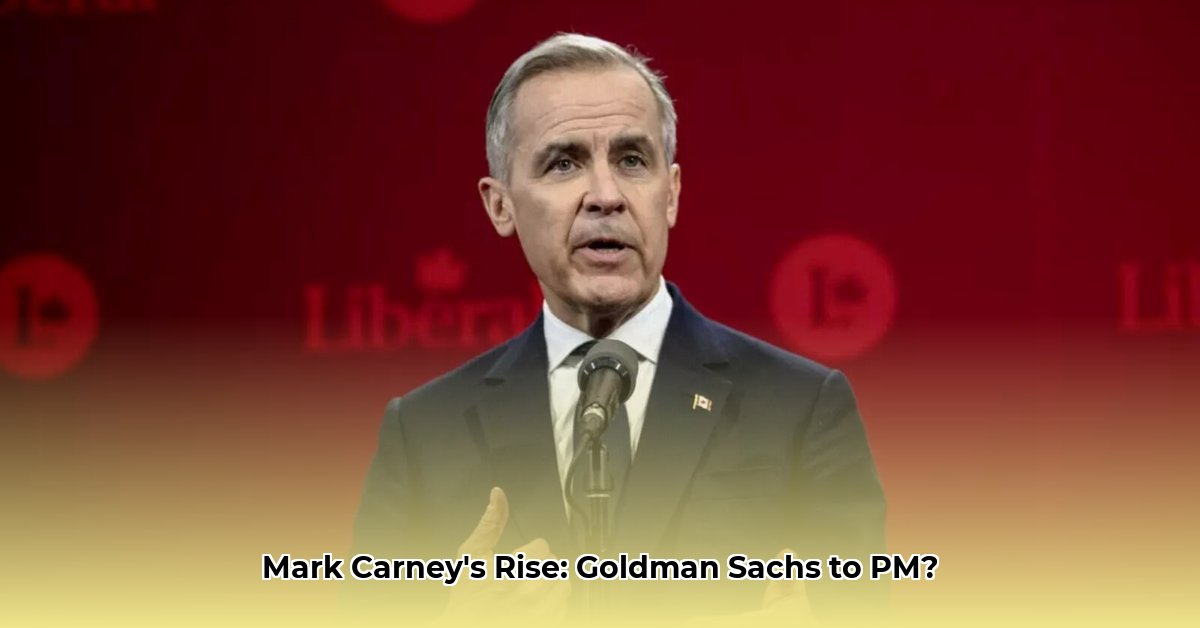
Mark Carney's career trajectory is anything but typical. From the high-stakes world of Goldman Sachs to leading the Bank of Canada and the Bank of England, and now advising world leaders, his journey is a fascinating blend of high finance and public service. This article explores the complexities of his financial journey, examining his compensation at each stage and attempting to assess his overall wealth – a surprisingly challenging task even for such a prominent figure. We'll analyze his strategic choices, exploring how they shaped both his career and his bank account. For a deeper dive into his finances, see Carney's net worth.
Early Career and Goldman Sachs
Carney's professional life began at Goldman Sachs, a global financial powerhouse. While the specifics of his compensation during this period remain undisclosed, his time at the firm undoubtedly provided a strong financial foundation and valuable experience in complex financial instruments and markets. This early success likely contributed significantly to his initial wealth accumulation. However, the specifics of his earnings at Goldman Sachs remain confidential, and a precise figure is unavailable.
The Bank of Canada: A Shift in Priorities?
His appointment as Governor of the Bank of Canada marked a pivotal shift. While the compensation was substantial, it was likely less than he could have earned remaining in the private sector. This suggests a prioritization of public service and influence over solely maximizing personal wealth – a pattern that would recur throughout his career. His salary, though publicly available, is difficult to definitively compare to his peers at Goldman Sachs or other private sector roles due to the differences in compensation structures, making a direct comparison challenging.
Navigating the Storm: The Bank of England
Carney's tenure as Governor of the Bank of England further solidified his reputation as a key figure in global finance. He navigated the institution through the aftermath of the 2008 financial crisis and subsequent economic recovery. Again, while his salary was publicly disclosed, a direct comparison to his potential private sector earnings remains elusive, highlighting his choice to prioritize public service over personal financial gain. Did this commitment to public service come with a financial cost? The data suggests a likely yes, but the exact extent is unknown.
Brookfield Asset Management: A Strategic Return to the Private Sector?
Following his time at the Bank of England, Carney joined Brookfield Asset Management, a global leader in sustainable investing. This marked a return to the private sector, yet with a notable emphasis on environmentally and socially responsible investments. Precise details regarding his compensation remain confidential, but this role undoubtedly significantly boosted his net worth. This transition highlights a focus on impact investing, implying that his financial decisions are now fundamentally shaped by opportunities to leverage his influence in the sustainable finance space. How does this compare to his peers in roles with similiar responsibility and impact? Unfortunately, this is largely unquantifiable.
Estimating Mark Carney's Net Worth
Determining Mark Carney's exact net worth presents significant difficulties. Publicly available information is limited, and the complexities of his investment portfolio, which likely includes real estate holdings and other private assets, contribute to the challenge of forming an accurate estimate. Various sources offer widely differing figures, highlighting the limitations of assessing the wealth of high-profile individuals. What is certain is that his wealth is substantial, but the precise amount remains speculative.
The Challenges of Transparency
The discrepancies in reported net worth estimates underscore the inherent challenges in accurately assessing the wealth of individuals with complex and diversified asset holdings. Lack of transparency around the financial affairs of high-profile public figures hinders accurate assessment. Such opacity makes direct comparisons with peers in the public and private sectors difficult, limiting our ability to develop a clear understanding of the comparative financial implications of his career choices.
A Unique Career Trajectory
Mark Carney's career is unique, characterized by a balance between high-level positions in the public and private sectors. Rather than prioritizing relentless wealth accumulation, he opted for roles with significant influence in both public service and sustainable finance. This demonstrates a commitment to societal impact, raising intriguing questions about the trade-offs between personal wealth and long-term legacy.
Stakeholder Implications and Risk Assessment
Mark Carney's decisions impact numerous stakeholders. Understanding these impacts requires considering both short-term and long-term consequences:
Stakeholder Analysis: (Simplified for brevity)
- Financial Markets: His policies directly influence market behavior and investor confidence.
- Investors: His engagement in sustainable finance affects investment opportunities and returns.
- Citizens (Canada & Globally): His decisions have profound implications for economic prosperity and social well-being.
Risk Assessment (Simplified):
- Reputational Risk: His actions and public statements can impact his reputation and future opportunities.
- Policy Implementation Risk: Challenges in implementing his initiatives could lead to unexpected outcomes.
- Market Volatility Risk: Unforeseen economic events could negatively impact the value of his investments.
In conclusion, Mark Carney's career presents a compelling case study. While his exact net worth remains elusive, the impact of his choices on both his financial situation and the global economy is undeniable. This emphasizes the complexities associated with understanding the financial implications of career paths that balance public service and private sector ambitions. Greater transparency in the financial affairs of high-profile individuals would facilitate a more definitive understanding of these dynamics.